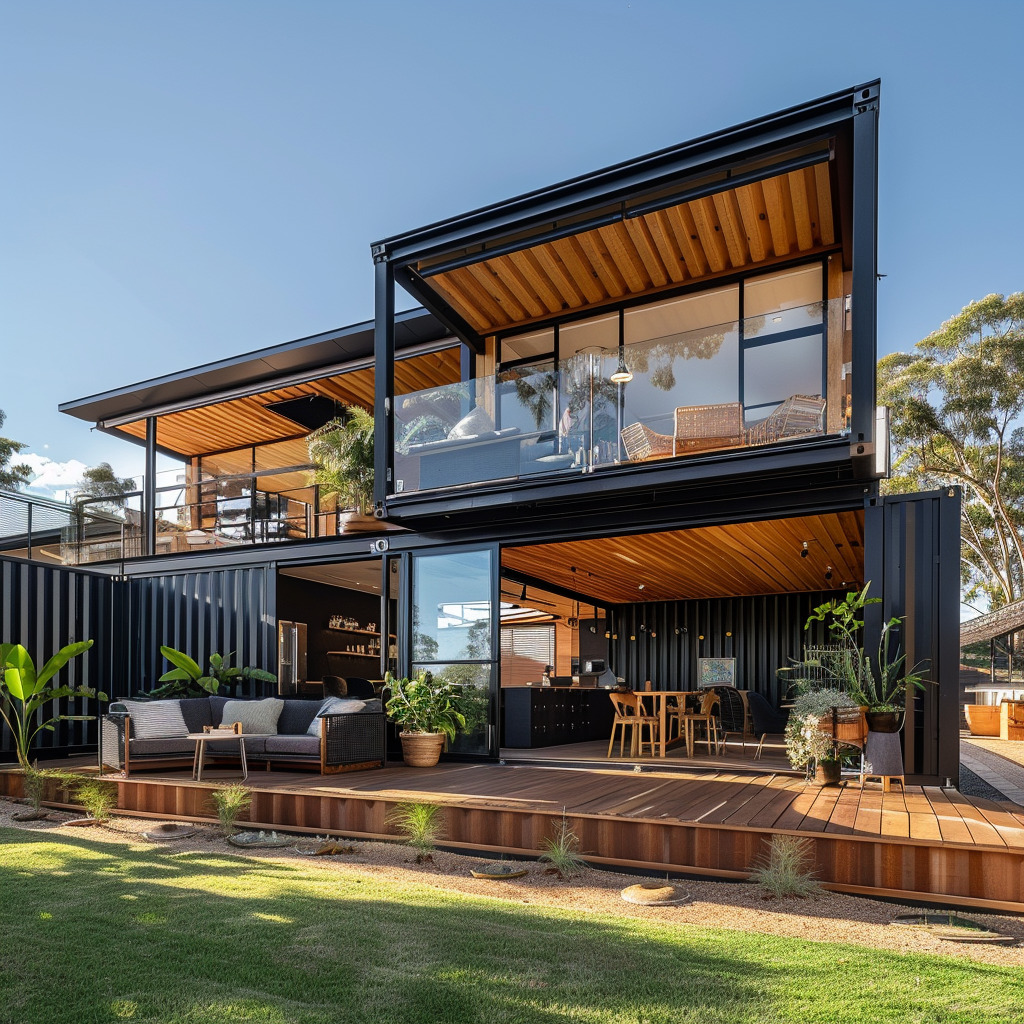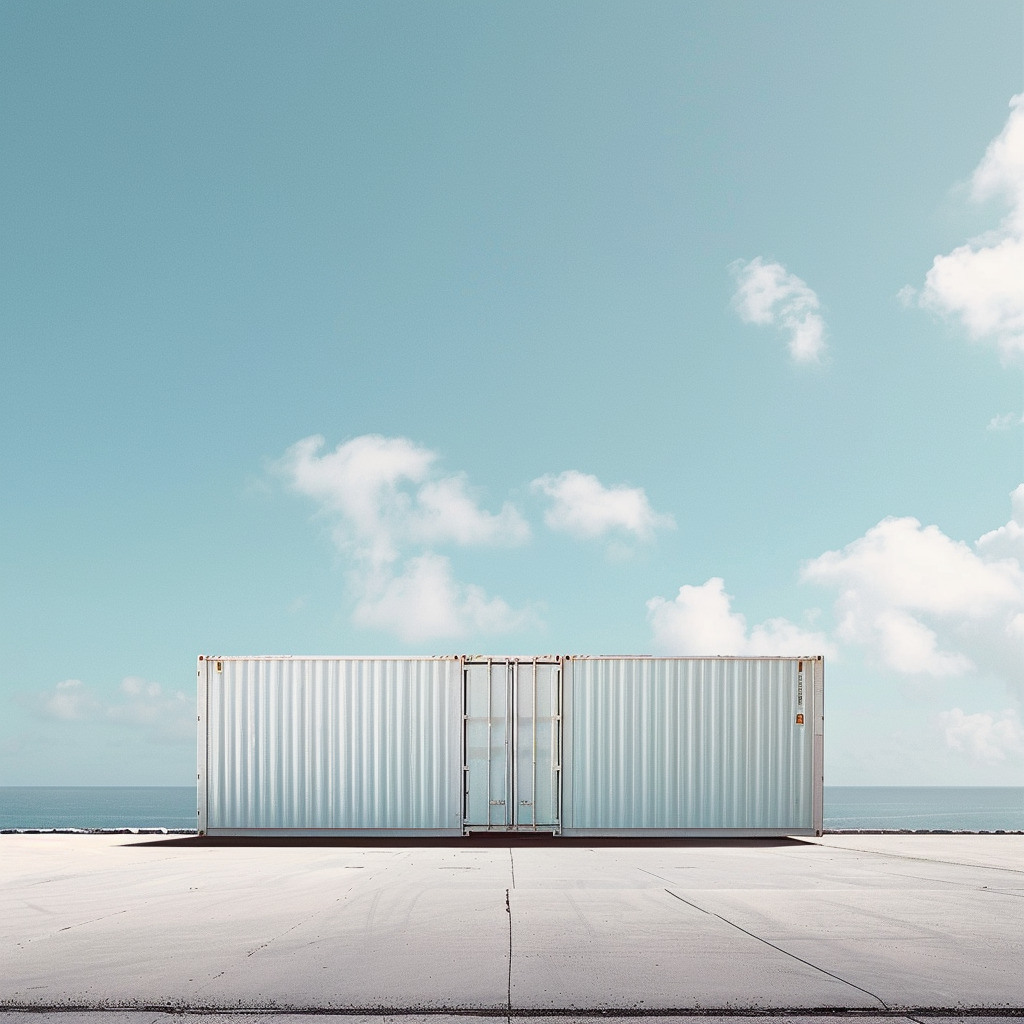Table of Contents
- Read on to discover the essential steps to navigating the approval process without getting lost in red tape.
- Understanding Zoning Laws
- Researching Local Regulations
- Navigating Council Approvals and Preparing Necessary Documents
- Meeting Safety Standards
- Submitting Detailed Plans
- Accurate Floor Layouts
- Structural Integrity Proof
- Utility Connection Details
- Scheduling Inspections
- Managing Approval Timelines
- Addressing Common Challenges
- Navigating Local Regulations
- Securing Building Permits
- Handling Utility Connections
- Consulting With Professionals
- Case Study: Byron Bay
- Frequently Asked Questions
- Get Your FREE Checklist by Completing the Form Below!
Thinking of joining the container home movement in Australia? Absolutely, you can do it! But first, let’s talk zoning laws – the rules that can make or break your project. These local regulations cover everything from how big your container can be to where it can sit and even what it should look like. It might seem like a lot to handle, but fear not! We’re here to help you navigate every step, from getting the right approvals to making sure your home is safe and sound. Want to know how to streamline this process and avoid common pitfalls?
Read on to discover the essential steps to navigating the approval process without getting lost in red tape.
Here’s what we’ll cover:
- What zoning regulations could catch you off guard, and how you can get ahead of them.
- Is your design ready for council approval, or are you missing critical documentation?
- Wondering when to bring in the experts – and who they should be? Leverage their knowledge to streamline your journey.
- Think inspections are just a formality? Learn why they could make or break your container home dreams.
Understanding Zoning Laws
Navigating zoning laws is essential when planning to build a shipping container home in Australia. These laws dictate where you can build, with some areas outright prohibiting such homes or imposing stringent regulations.
Local councils have the authority to set these zoning restrictions, which can include limits on the number of containers, minimum lot sizes, and specific aesthetic requirements.
Residential zones often have different rules compared to commercial or industrial zones. Some councils may only allow container homes in commercial or industrial areas, meaning you’ll need to check if your desired location is even permissible for a container home.
Obtaining the necessary zoning approval is crucial before you start any construction. Unauthorised building can lead to legal action, hefty fines, or even the removal of your structure.
Councils also consider factors like the home’s visibility, noise levels, and environmental impact when reviewing zoning applications. Presenting a well-thought-out plan that addresses these concerns can improve your chances of approval.
Understanding these zoning laws will help you avoid obstacles and ensure your shipping container home project moves forward smoothly.
Researching Local Regulations
To get started, dive into the specific regulations of your local council to ensure your shipping container home project complies with all zoning requirements.
Each Australian state and territory has its own set of zoning and planning regulations, so it’s crucial to know what’s applicable in your area. Some councils might allow container homes as primary residences, while others might only permit them as secondary dwellings.
Contact your local council’s planning department to get detailed information about zoning requirements for your property. Be prepared to discuss factors like the number of containers you plan to use, their intended use, and their placement on the land. These elements can significantly impact the approval process.
Regulations may also include restrictions on the size, height, and visual appearance of container homes to maintain the character of the neighborhood. Ensure you understand these specifics to avoid any compliance issues later.

Navigating Council Approvals and Preparing Necessary Documents
Building a shipping container home in Australia requires careful planning and adherence to local regulations. Here’s a step-by-step guide to help you navigate the council approval process and prepare the necessary documents.
Step 1: Gathering Information
Start by obtaining a site plan that clearly shows the proposed location of your container home on the property. This will help you visualise the layout and ensure it complies with local zoning regulations.
Next, prepare detailed architectural plans and engineering drawings. These documents should outline every aspect of your container home design, from structural elements to interior layouts. Make sure these plans meet the local building codes and standards.
Step 2: Navigating Council Approvals
Obtain Building Permits: Before starting any construction, you’ll need to secure the required building permits from your local council. This involves submitting your detailed plans, including design, location, and intended use. Some councils may have specific guidelines for shipping container homes, so ensure your plans align with these requirements.
Engage Professionals: Hiring architects, engineers, or building consultants can be immensely helpful. These professionals can assist you in creating compliant designs and navigating the approval process more smoothly. They ensure your plans meet all structural and safety standards, which is essential for gaining council approval.
Step 3: Preparing Necessary Documents
You’ll need to gather relevant certificates of compliance for your shipping containers. These certificates should include structural integrity assessments to prove that your containers are safe and suitable for residential use.
Compile documentation that demonstrates your project complies with local zoning regulations, building codes, and environmental standards. This can include anything from soil reports to flood risk assessments, depending on your location.
Step 4: Securing Permits
Ensure you secure all necessary permits before starting construction. This includes building and development approvals. Having all your paperwork in order will streamline the process and prevent costly delays and legal issues down the road.
Step 5: Passing Inspections
Once you have your permits and construction begins, your project will need to pass various inspections. These inspections ensure that your container home is built according to approved plans and adheres to all relevant building codes. Successfully passing these inspections is key to obtaining final approval for your shipping container home.

Meeting Safety Standards
Ensuring your shipping container home meets safety standards is crucial for compliance and long-term viability. Start by adhering to the National Construction Code (NCC), which guarantees structural integrity, weatherproofing, and fire safety. You’ll need to ensure that your plumbing, electrical, and insulation systems comply with relevant Australian Standards and energy efficiency requirements. This not only ensures safety but also improves the livability of your home.
Engaging certified engineers and building surveyors is a must. They’ll assess the structural soundness and safety of your modifications, ensuring everything meets NCC standards.
Depending on your location, local councils may impose additional safety measures. This could include installing fire-resistant cladding or sprinkler systems, especially in high-risk zones.
You may also need to include features for accessibility and disability access, so keep this in mind when it comes to your design and local regulations. This ensures your home is inclusive and compliant with local laws.
Submitting Detailed Plans
When submitting your detailed plans, ensure you include accurate floor layouts to show the intended design.
Provide proof of the shipping container’s structural integrity to meet building codes.
Don’t forget to detail utility connections for plumbing, electrical, and insulation to align with local regulations.

Accurate Floor Layouts
To secure council approval for your shipping container home, you’ll need to submit precise, detailed floor plans that comply with local regulations. These plans should include the exact container dimensions, room layouts, and the placement of windows and doors. Any modifications or additions to the containers must also be clearly outlined.
Clearly specify the size and configuration of each container. Indicate how they connect and the overall layout of the rooms.
Show the exact placement of all windows and doors. This helps in assessing light, ventilation, and emergency egress points.
Include any changes you plan to make, such as cutting new openings or adding external structures. This demonstrates how the containers will be adapted for residential use.
Professionally drafted plans by an architect or engineer can significantly increase your chances of gaining approval. They ensure that your design complies with building codes and integrates well with the surrounding neighborhood. Comprehensive and well-designed plans can streamline the approval process, reducing the likelihood of delays or rejections from the local council.
Structural Integrity Proof
Detailed architectural and engineering plans are crucial for demonstrating your shipping container home’s structural integrity to local councils. These plans need to outline every detail, including container modifications, reinforcements, and connections, ensuring they comply with relevant building codes and standards. You can’t skip this step; it’s essential for proving that your home will be safe and durable.
Have a certified structural engineer review and stamp your plans. This certification confirms that your design can withstand various loads, such as wind and seismic activity. Local councils will scrutinise these documents to ensure your shipping container home meets all the requirements for permanent residential dwellings in your area. This review process isn’t just a formality; it’s a vital part of gaining council approval.
Before you start construction, securing council approval for your home’s structural integrity is crucial. Without it, you risk delays, fines, or even the possibility of having to halt your project altogether. So, invest the time and resources to create detailed, compliant plans. This effort will pay off when you receive the green light to build your dream shipping container home.

Utility Connection Details
Submitting plans for water, electricity, and sewage connections is a critical step you can’t overlook when building a shipping container home in Australia. Local councils require these detailed plans to ensure your proposed utility connections meet all relevant building codes and safety standards.
Hire licensed plumbers, electricians, and other tradespeople to design and install your utility infrastructure. Their expertise ensures your plans will adhere to regulatory requirements, reducing the risk of approval delays.
Prepare and submit comprehensive plans to your local council. These should outline every aspect of your utility connections, from water supply lines to electrical wiring and sewage systems. Detailed submissions demonstrate your commitment to safety and compliance, improving your chances of swift approval.
Understand that obtaining approvals can be a lengthy process. Factor this into your overall project timeline to avoid unexpected delays. Start early and maintain open communication with your council to stay informed about the status of your application.
Proper utility planning and council approval are crucial to avoid delays or issues during the construction and occupation of your shipping container home.
Scheduling Inspections
Scheduling inspections is essential to ensure your shipping container home in Australia complies with all building codes and passes the necessary checks for final approval. Councils typically require multiple inspections throughout the construction process, such as site inspections, framing inspections, plumbing inspections, and a final inspection before issuing an occupancy permit.
To avoid delays, you should work closely with your local council to understand the specific inspection requirements and schedule these inspections well in advance. Missing or failing any required inspections can result in the council issuing stop-work orders or refusing to grant the necessary permits, significantly delaying your project.
Engaging with licensed professionals, like architects or building inspectors, can streamline the inspection process. These experts can help ensure your project meets all safety and compliance standards, making it more likely to pass inspections on the first try. They can also provide valuable guidance on when and how to schedule each inspection, helping you stay on track with your construction timeline.
Managing Approval Timelines
Navigating the approval timelines for your shipping container home in Australia requires strategic planning and proactive engagement with local councils. The process can take 6-12 months, so it’s essential to plan ahead.
- Prepare Comprehensive Plans: Start by preparing detailed architectural and engineering plans. These should address all council requirements proactively. Comprehensive plans demonstrate that you’ve considered structural integrity, safety, and environmental impact, which can help in speeding up the approval process.
- Choose Off-Peak Seasons: Timing your application during off-peak seasons when councils are less busy can also reduce wait times. Typically, councils have fewer applications during non-holiday periods, allowing your submission to be reviewed more quickly.
- Engage Experienced Professionals: Hiring an experienced container home builder or designer familiar with local approval processes can streamline your application. They often have established relationships with council officials and understand the nuances of local regulations, which can minimise delays.
Additionally, be prepared for potential requests for extra documentation, such as structural assessments or environmental impact reports. Being proactive and organised will help you navigate the approval process more efficiently and keep your project on track.

Addressing Common Challenges
When planning your container home, you’ll face challenges like navigating local regulations, securing building permits, and handling utility connections.
It’s crucial to understand the specific requirements of your area to ensure compliance and avoid delays.
Engaging with local authorities early can help you identify and overcome these obstacles efficiently.
Navigating Local Regulations
Understanding local regulations is crucial to successfully building a shipping container home in Australia. These rules can vary significantly between regions, so you’ll need to be well-informed and proactive. Local councils often have specific guidelines for non-traditional housing, which can present challenges.
Research Local Zoning Laws: Start by investigating the zoning laws in your area. Some zones may not permit shipping container homes, while others have specific requirements regarding size, appearance, and placement. Reach out to your local council for detailed information.
Understand Building Codes: Building codes ensure that your home meets safety and structural standards. These can include requirements for insulation, ventilation, and structural integrity. Familiarise yourself with these codes to avoid costly modifications later.
Consult with Professionals: Engaging with architects, builders, and legal advisors who’ve experience with shipping container homes can save you time and stress. They can help you interpret local regulations and ensure your project complies with all necessary standards.
Securing Building Permits
Securing building permits for your shipping container home in Australia can be a complex but essential step in the construction process. Each local council has its own policies regarding the use of shipping containers, and while some may allow temporary structures, others will require you to secure permanent approvals.
To get started, you’ll need to submit comprehensive architectural and engineering plans that demonstrate your home meets all structural, safety, and livability standards. If you’re an owner-builder, you might also need to complete mandatory training courses. These courses ensure you understand the building requirements and responsibilities involved.
It’s important to be aware that navigating the council approval process can be time-consuming and intricate, particularly if it’s your first time dealing with such regulations. This is why engaging professional assistance, like hiring an experienced builder or consultant, is often recommended. They can help streamline the process and ensure all your documentation meets the necessary criteria.

Handling Utility Connections
After securing your building permits, the next challenge is connecting utilities like electricity, water, and sewage to your shipping container home. This process can be tricky and often requires coordination with local authorities and utility providers.
Placement on Property: Where you place your shipping container home on the property is crucial. If it’s too far from existing utility lines, you might face higher costs and more complex logistics to extend those connections. Ideally, choose a location that minimises the distance to these utilities.
Separate Utility Meters: Some councils may require your container home to have separate utility meters. This can add both complexity and expense to your installation. Make sure to check with your local council to understand their specific requirements and factor these into your budget.
Integration with Main Systems: Ensuring your container home’s electrical and plumbing systems are properly integrated with the main utility connections is essential. This not only meets safety and compliance standards but also ensures your home functions smoothly. Consulting experienced container home builders or contractors can provide valuable guidance through this process.
Consulting With Professionals
Engaging with architects, engineers, and local council experts is crucial for navigating the zoning and approval process for your shipping container home in Australia. These professionals provide essential guidance to ensure your project complies with building codes, structural requirements, and local regulations. Without their expertise, you might face hurdles that could delay or even derail your plans.
Architects and experienced designers can offer innovative solutions to integrate container structures within the constraints of zoning laws and council policies. Their creative input can help make the most of the space and materials while adhering to legal requirements.
Engineers ensure the structural integrity of your container home, addressing any potential issues before they become problems.
Consulting with local council experts streamlines the application process, increasing your chances of obtaining the necessary permits and approvals. They understand the intricacies of local regulations and can provide invaluable insights and tips. Working closely with this knowledgeable team helps you overcome challenges related to zoning, site preparation, and meeting regulatory standards.
Don’t underestimate the value of professional assistance. By collaborating with the right experts, you’ll navigate the zoning maze more efficiently and bring your shipping container home project to fruition.
Case Study: Byron Bay
Jamie Smallwood, an architect with Balanced Earth, built an off-grid container home in Byron Bay, NSW. Initially, the project faced challenges due to concerns about visual impact and environmental sustainability. However, by collaborating with local architects and the council, Smallwood redesigned the home using eco-friendly materials and minimised landscape disruption. This effort resulted in a sustainable living model, inspiring the community towards alternative housing options.
Frequently Asked Questions
Yes, shipping container homes are legal in Australia. You’ll need to comply with the same building codes and regulations as traditional homes. Check with local councils for specific zoning laws and permit requirements in your area.
Building a shipping container house in Australia typically costs between $50,000 and $150,000. Your final cost depends on design complexity, location, and additional features. Don’t forget to include permits and site preparation in your budget.
You should insulate your shipping container home using spray foam or rigid foam boards. Focus on insulating the walls, ceiling, and floor to maintain comfortable temperatures and reduce energy costs. Select materials based on your location’s climate.
You’d find that fiberglass batt insulation is the cheapest way to insulate a container. It’s easy to install in walls and ceilings, providing decent thermal performance without breaking the bank.
In summary, understanding zoning laws, researching local regulations, and navigating council approvals are key.
Preparing necessary documents, meeting safety standards, and scheduling inspections are essential.

Managing approval timelines, addressing common challenges, and consulting with professionals will ensure your shipping container home project in Australia runs smoothly.
Stick to these steps, stay organised, and seek expert advice, and you’ll transform your container dream into a reality.
Call our team today on (07) 3062 8503. Gateway has over 20 years experience in our Customer Service & Sales Team, and are here to help get you started with the highest quality containers.
CALL GATEWAY TODAY!
Phone our team, with over 20 years of experience in our Sales Office. We’re your local experts!




